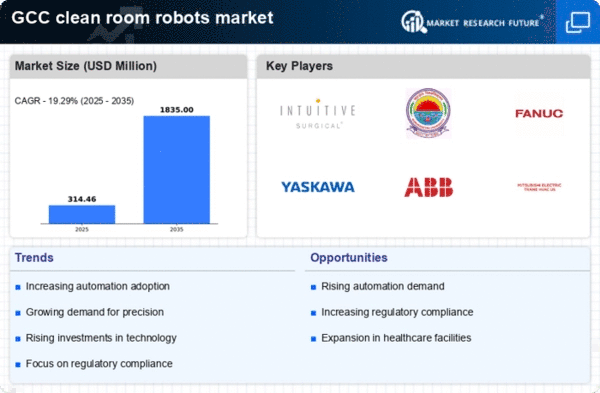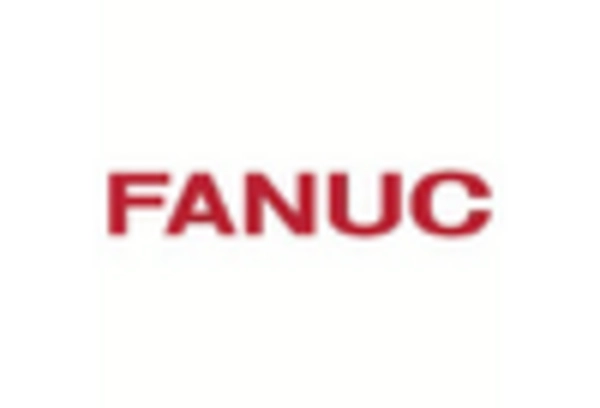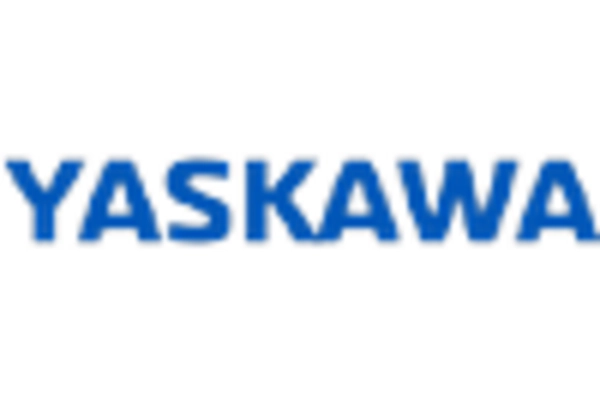Government Initiatives and Funding
Government initiatives in the GCC region are playing a crucial role in the advancement of the clean room-robots market. Various national programs aimed at promoting automation and technological innovation are providing financial support and incentives for industries to adopt robotic solutions. For instance, the UAE's Vision 2021 emphasizes the importance of advanced technologies in enhancing productivity and competitiveness. Such initiatives are likely to stimulate investments in clean room technologies, thereby propelling the clean room-robots market forward. The allocation of funds for research and development in robotics is expected to yield innovative solutions tailored to the unique requirements of clean environments, further driving market growth.
Increased Focus on Quality Control
Quality control remains a pivotal concern for industries operating within clean environments, particularly in the GCC region. The clean room robots market is likely to thrive as organizations prioritize implementing automated systems that enhance quality assurance processes. The integration of robotics in clean rooms allows for precise monitoring and control of environmental conditions, which is essential for maintaining product integrity. As industries face increasing pressure to meet regulatory standards, the demand for advanced robotic solutions that facilitate rigorous quality control measures is expected to rise. This trend suggests a robust growth trajectory for the clean room-robots market, as companies seek to leverage technology to ensure compliance and enhance product quality.
Rising Demand for Clean Environments
The clean room robots market is experiencing a notable surge in demand due to the increasing need for sterile environments across various sectors, particularly in pharmaceuticals and biotechnology. As the GCC region continues to expand its healthcare infrastructure, the necessity for clean rooms has become paramount. This trend is reflected in the projected growth of the clean room-robots market, which is expected to reach approximately $1.5 billion by 2026. The emphasis on maintaining contamination-free spaces is pushing industries to adopt robotic solutions that ensure compliance with stringent regulations. Consequently, the clean room-robots market is likely to benefit from this heightened focus on cleanliness and safety, as organizations seek to enhance operational efficiency while minimizing human error.
Technological Integration and Smart Solutions
The clean room-robots market is witnessing a transformative shift towards the integration of smart technologies and IoT solutions. As industries in the GCC region embrace digital transformation, the demand for intelligent robotic systems that can communicate and adapt to changing conditions is on the rise. These smart solutions not only enhance operational efficiency but also provide real-time data analytics, enabling organizations to make informed decisions. The potential for increased automation and connectivity within clean rooms suggests a promising outlook for the clean room-robots market. Companies are likely to invest in advanced robotics that incorporate AI and machine learning capabilities, further driving innovation and market expansion.
Growing Pharmaceutical and Biotechnology Sectors
The expansion of the pharmaceutical and biotechnology sectors in the GCC region is significantly influencing the clean room-robots market. As these industries continue to grow, the need for advanced clean room solutions becomes increasingly critical. The clean room robots market is expected to benefit from the rising demand for automated systems that can operate in highly controlled environments. With the GCC's focus on becoming a hub for pharmaceutical manufacturing, the investment in clean room technologies is likely to increase. This trend indicates a strong correlation between the growth of the pharmaceutical sector and the demand for clean room-robots, suggesting a favorable environment for market development.

















Leave a Comment